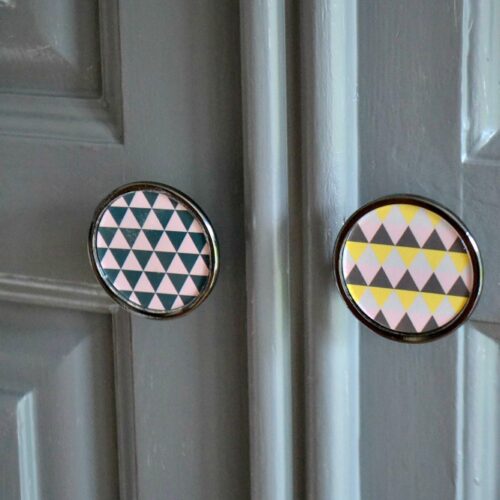
Water is not always safe for drinking. Contaminants like lead, arsenic, and microorganisms can make your water unsafe, putting you at risk of many health problems.
Filtering out these contaminants is the only way to make your water safe for drinking. With many filtering options available, it can be hard to pick one. If you’re also unsure of how to remove contaminants from your water, this article is here to help you out.
We’ll talk about easy yet effective ways you can filter specific contaminants from water.
Let’s start with a notorious water contaminant, lead.
How to Remove Lead from Your Drinking Water
Lead is a heavy metal that should not be found in your drinking water. Drinking lead-contaminated water can cause fatigue, heart-related diseases, and kidney dysfunction.
Lead can get into your drinking water if you use lead plumbing. The best way to get rid of lead contamination is by changing your lead pipes. But most times, these pipes spread out for miles, and it’s impossible to replace them. If you can’t replace your lead pipes, you can still filter lead out of your water by:
- Using Water Distillers: Water distillers can remove contaminants like lead from water. They contain a boiling chamber, condenser, and reservoir. The boiling chamber boils your drinking water until it vaporizes and goes into the condenser. The distiller cannot vaporize lead, so it remains in the boiling chamber where the system can quickly dispose of it. Your drinking water is converted back to liquid in the condenser, now completely lead-free, and it flows into the reservoir to be stored for use.
- Using Reverse Osmosis Systems: RO systems work by pushing water through a semi-permeable membrane under high pressure. The membrane prevents lead from passing through, so only clean, lead-free water flows out.
Both water distillers and reverse osmosis water filter systems remove lead from your water without you doing much work. You only need to install them in your kitchen.
Manufacturers have also created filters specifically designed to remove lead. You can now get the best water filter for lead and expect excellent results.
How to Remove Other Contaminants from Your Drinking Water
E. coli
- E. coli is a type of bacteria that gets into your water when the source comes in contact with human or animal waste. Like other microorganism contamination, its presence in drinking water can cause waterborne diseases like cholera, dysentery, and diarrhea. The CDC says that there is no certified filter for removing E. coli from water. Fortunately, though, there are effective ways to make your water free from microorganisms:
- Boiling: Heat your water until it starts to boil, and let it boil continuously for at least one minute. Such high temperatures will kill the bacteria, making your water safe for drinking.
- Chlorination: Adding chlorine to your water will effectively neutralize E. coli. You can use household bleach since it contains chlorine as an active ingredient. As long as the label confirms that it is suitable for disinfecting drinking water, add about eight drops of bleach to one gallon of drinking water and stir. Leave it for at least 35 minutes before you drink.
Arsenic
Arsenic is a chemical contaminant commonly found in groundwater sources. It may get into wells and other water sources through industrial or agricultural waste contamination. Drinking water that contains arsenic puts you at risk of stomach aches, diarrhea, and vomiting. You can effectively remove arsenic from your drinking water by:
- Using Reverse Osmosis: Reverse osmosis systems contain a membrane that prevents contaminants like arsenic from passing through. It allows only safe, arsenic-free water to flow out your tap. This option is the most economical and effective way of filtering out arsenic from drinking water.
Iron
Iron is a dangerous water contaminant when contained in high amounts. If your water has so much iron that it tastes metallic, looks discolored, and leaves rust stains on surfaces, you should take action to remove it by using:
- Water Softeners: Water softeners contain resin beads that replace negatively charged ions in water with positively charged sodium. Iron is also negatively charged, so water softeners will replace it with sodium, eliminating iron from your water.
- Iron Filters: These are water filters specifically designed for removing iron. They block the passage of iron, allowing only safe water to flow through the filter. Iron filters are effective for removing any form of iron in water.
Nitrates
Nitrates are formed in water when nitrogen from fertilizers or sewage comes in contact with water sources. Drinking nitrate-contaminated water can affect your red blood cell function and increase cancer risk. The Centers for Disease Control and Prevention recommends these options for removing nitrate from water at home:
- Reverse Osmosis: Like most chemical contaminants, nitrates cannot pass through the membrane in RO systems. RO systems eliminate up to 92% of nitrates, making them a practical option. They are best installed as under-sink systems, especially if you only want to remove nitrates from your drinking water.
- Anion Exchange Unit: This type of ion exchange unit replaces negatively charged ions in water (like nitrates) with harmless, positively charged ions like chloride. You should install them at your home’s water point of entry.



Leave a Reply